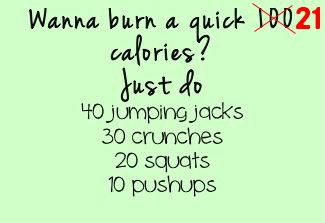The Myth of “The One”
Trying to lose weight? Run faster? Lift heavier? Then you’ve probably heard the myth of “The One.”
The one exercise to torch belly fat!
The one diet to cure all your ills!
The one to x. The one to y!
The Myth of the One is perpetuated through the media, social networking, your friends, your personal trainer, etc. Let’s break down the myth of “The One.”
– The Myth of One Exercise to Rule Them All
There are no shortages of this myth. It’s the one TYPE of fitness that is superior to others, or the one EXERCISE that will suddenly turn you into a Victoria’s Secret model. It’s also the ONE exercise to bring you glory above all glories.
There is no “ONE.” No two people have the same body, the same goals, the same diet and nutrition, the same cellular response to that exercise. To say that one exercise – or type of fitness – will work for everyone is a myth. If there were really ONE exercise that would eliminate all body fat, build large biceps, sculpt your gluteus, etc. we’d all be doing it. Incessantly.
– The Myth of One Diet of Superiority
It cites complex studies, makes documentaries, shows the cruelty of a given industry, claims to be a miracle cure. That’s how you can spot a ONE diet of superiority. It often uses straw man logic to create its theories, or ignores certain studies for its own purpose. It will create a cult of followers that are hell bent on making you believe the One True Diet exists. They’ll parrot about cancer, heart disease, brain starvation, carbohydrate depletion, and a myriad of other symptoms you’ll encounter if you’re not on The One True Diet.
Much like the exercise myth, there is no One True Diet. If there were one pill to take, or one way to eat, that would magically make you look a certain way we’d be on it. Someone would have discovered it and its results would resonate through the entire industry. Soon we’d all be on the Crossfit Games or in Bikini or Figure competitions and we’d all shed the baby weight within 6 weeks of birth. This doesn’t happen, because it doesn’t exist.
– The Truth: The ONE That Works For You
Break through the myth of The One and go to the truth of The One. This is The One That Works For You. No shortcuts, no gimmicks. This is based on trial and error, personal preference, individual goals, body type, genetics and a litany of other seemingly unrelated things. The One That Works For You is YOUR miracle drug. Some things to remember about The One That Works For You…
1. It’s your body, it works for you. It may not work for your twin sister or your best friend. Offering advice is one thing, but falling into The One trap is dangerous.
2. It’s your body, no one can tell you it doesn’t work for you. Ignore the naysayers, the haters, the whatevers. If you’ve found what works for you don’t let someone else take that from you.
DO NOT LET THE MYTH OF “THE ONE” DEFINE YOU!

